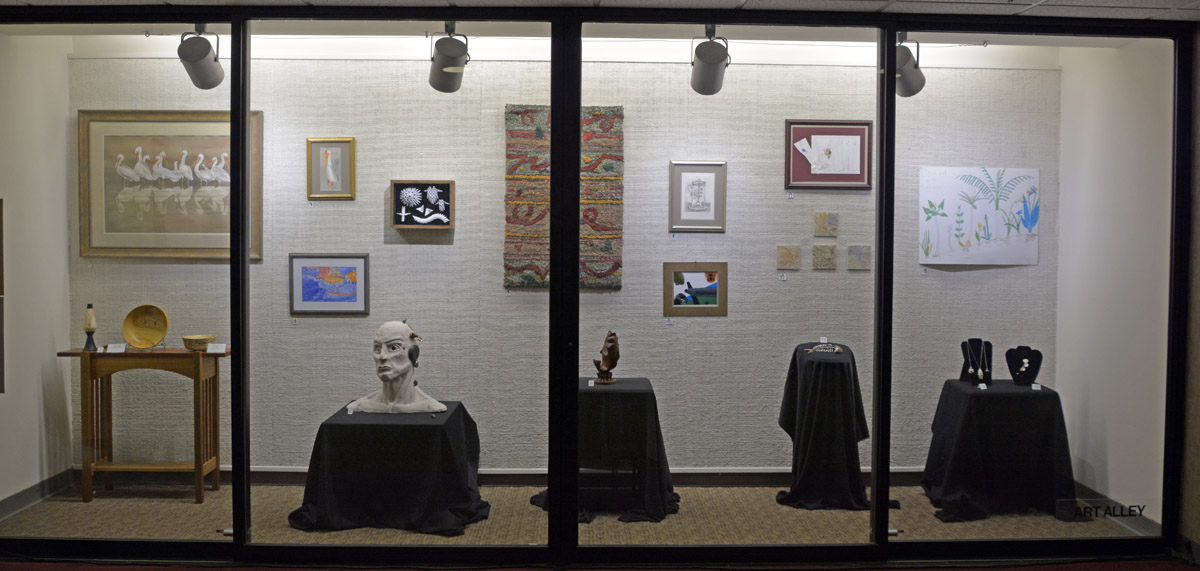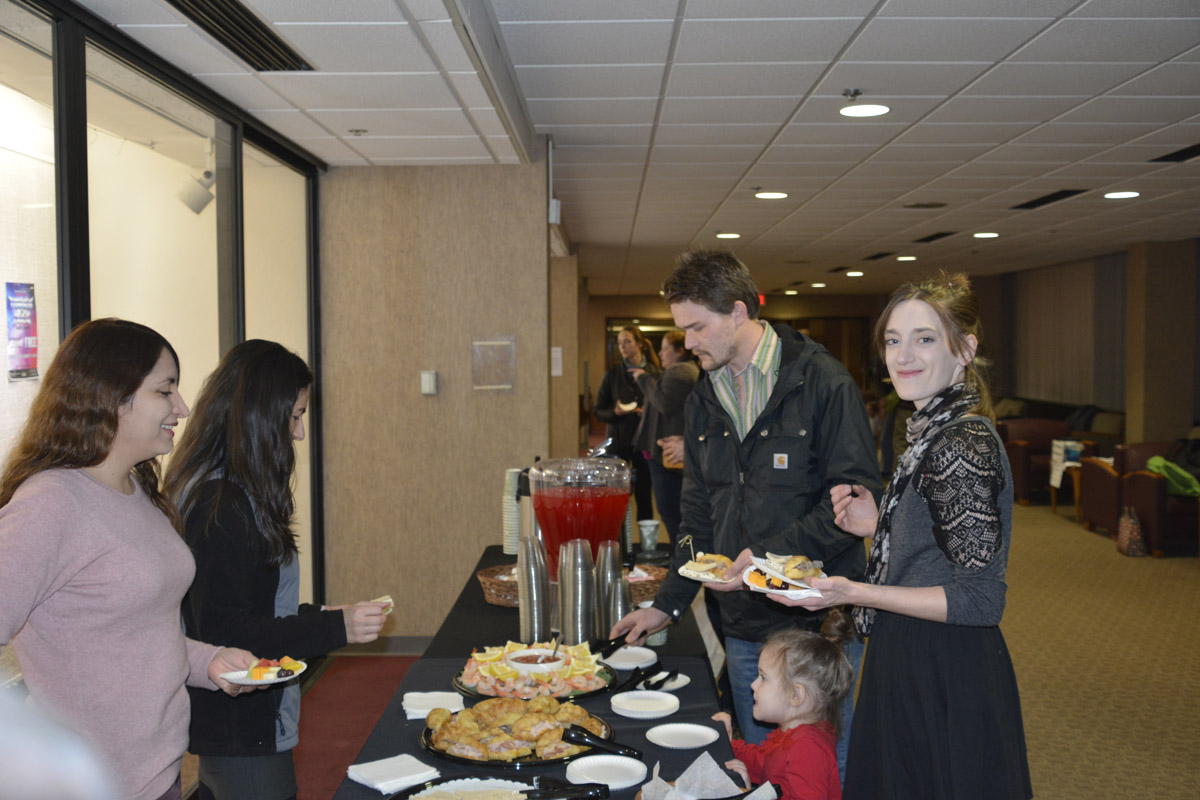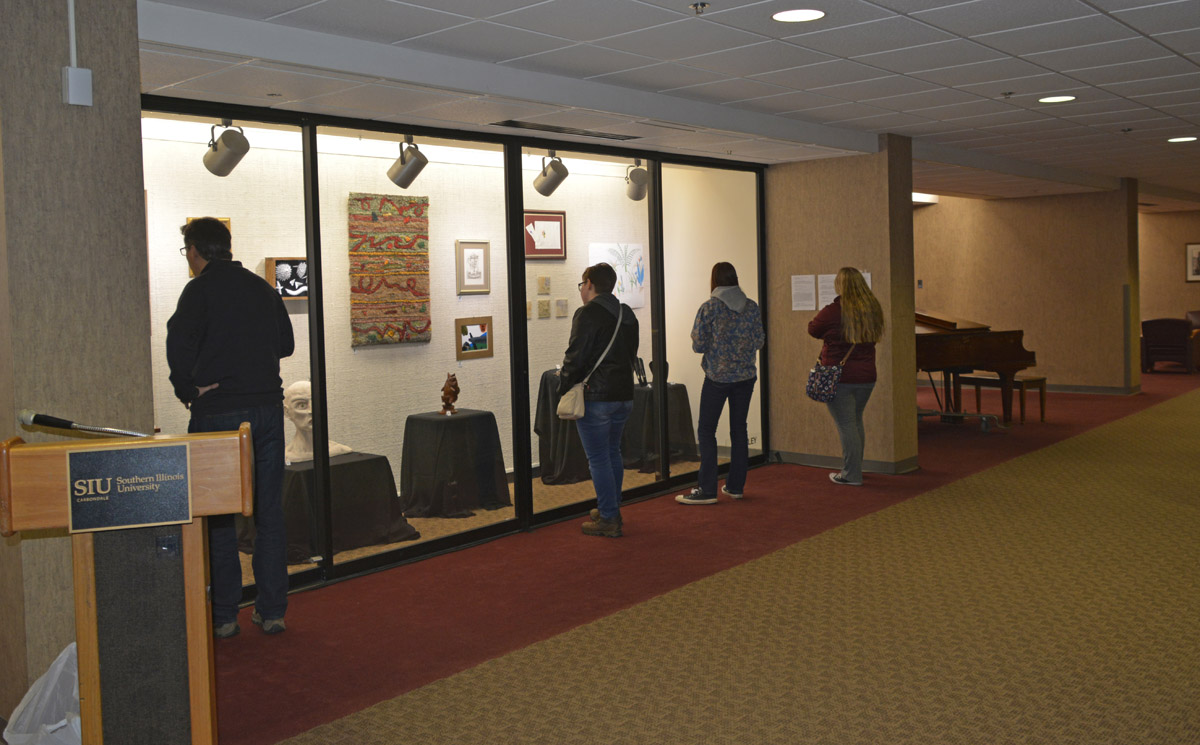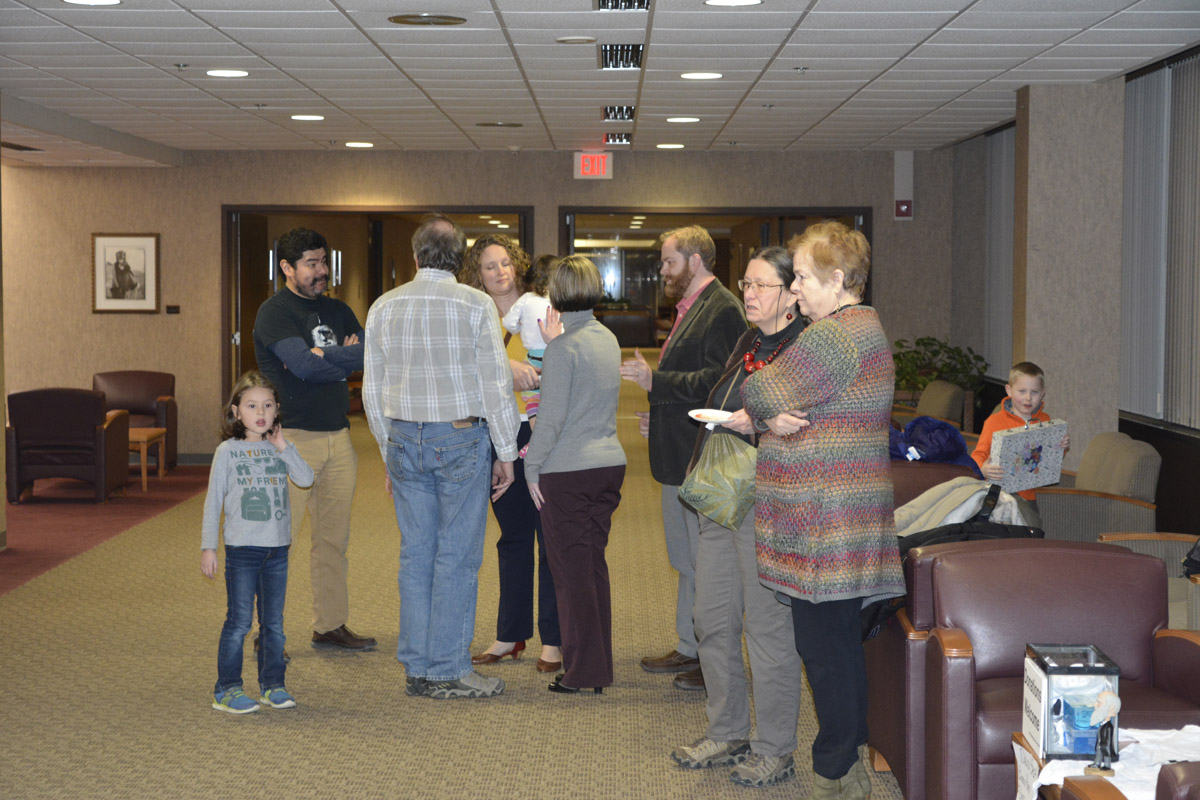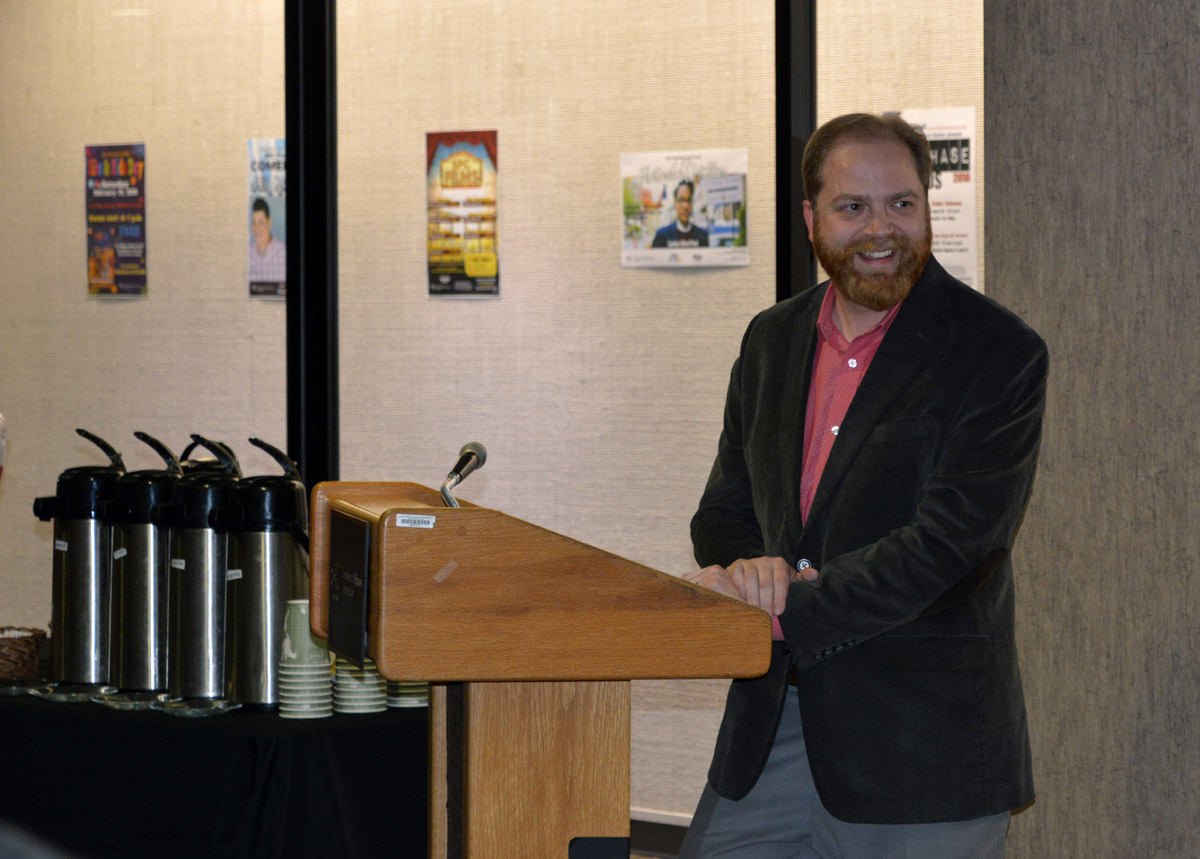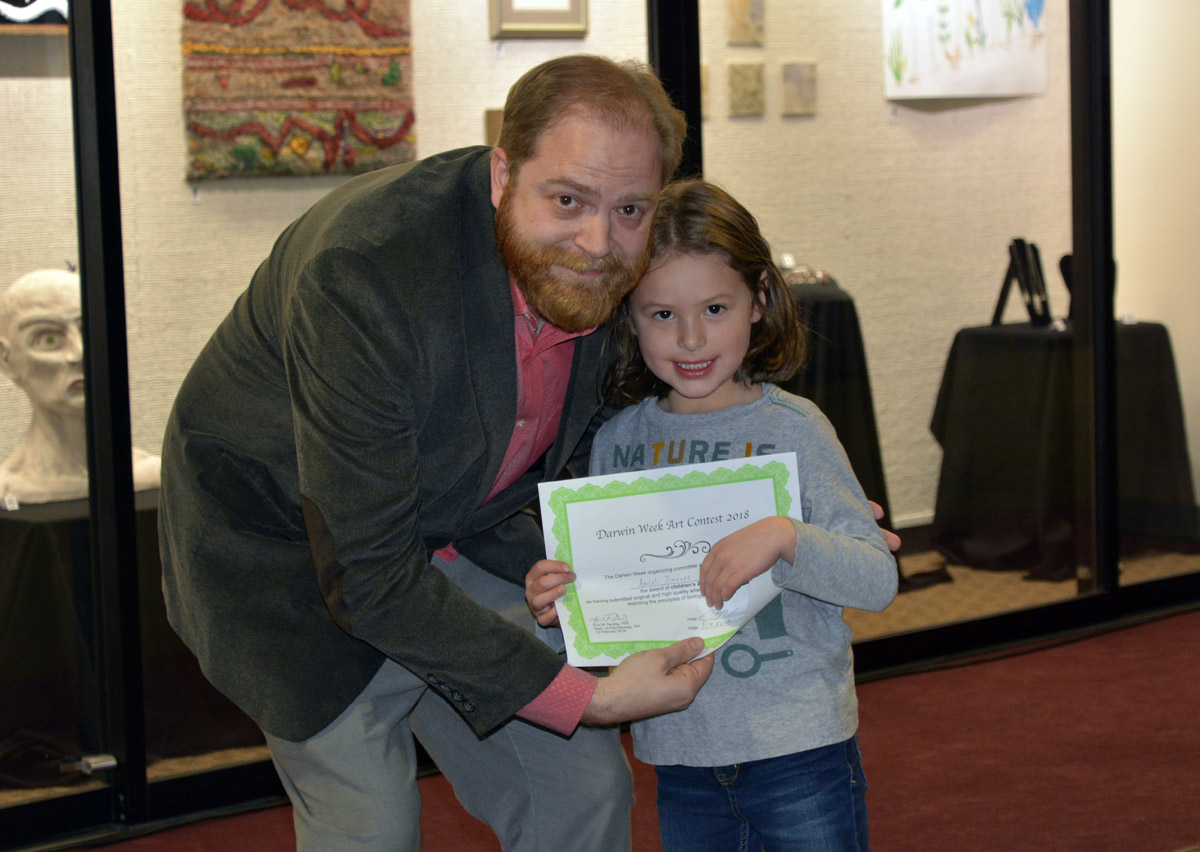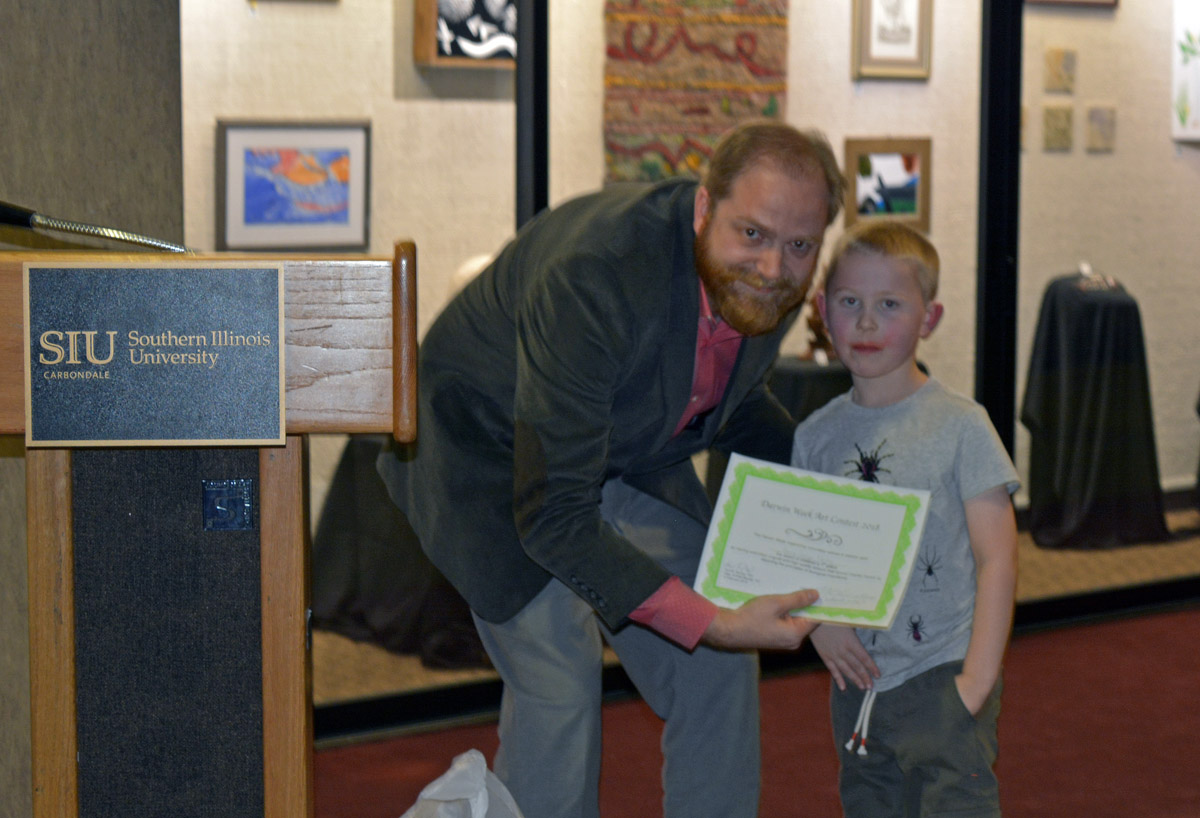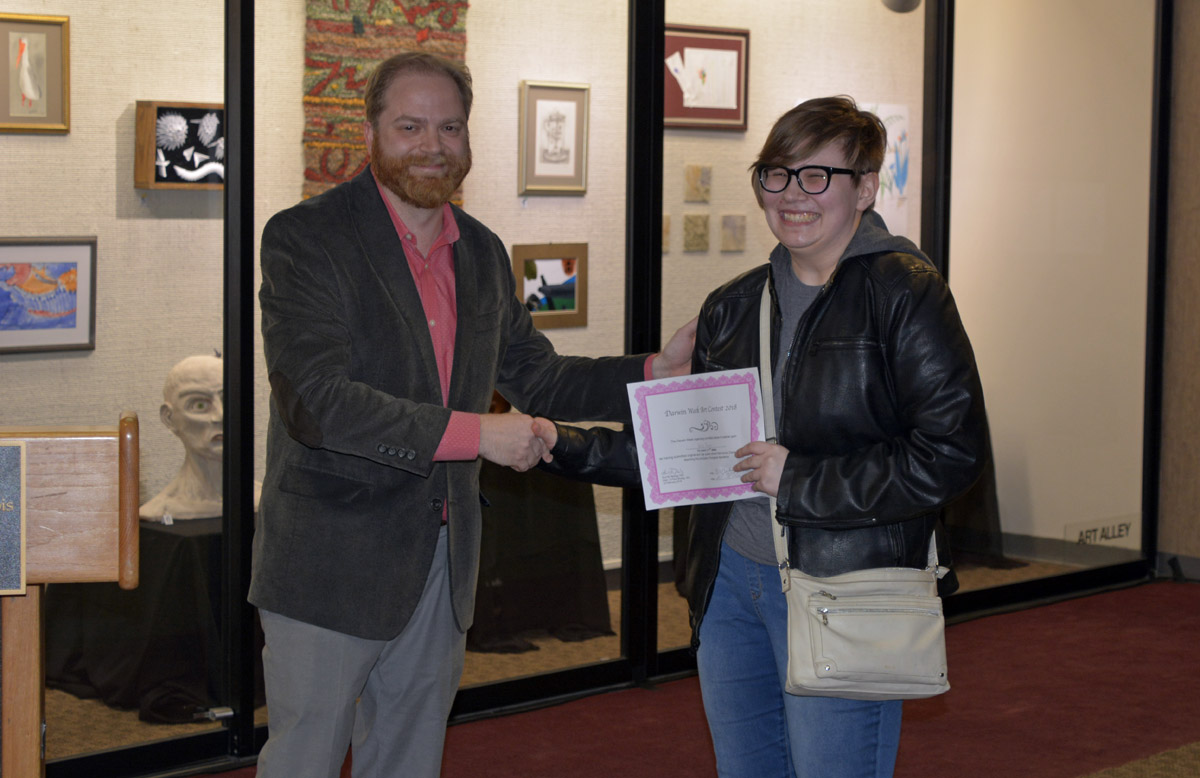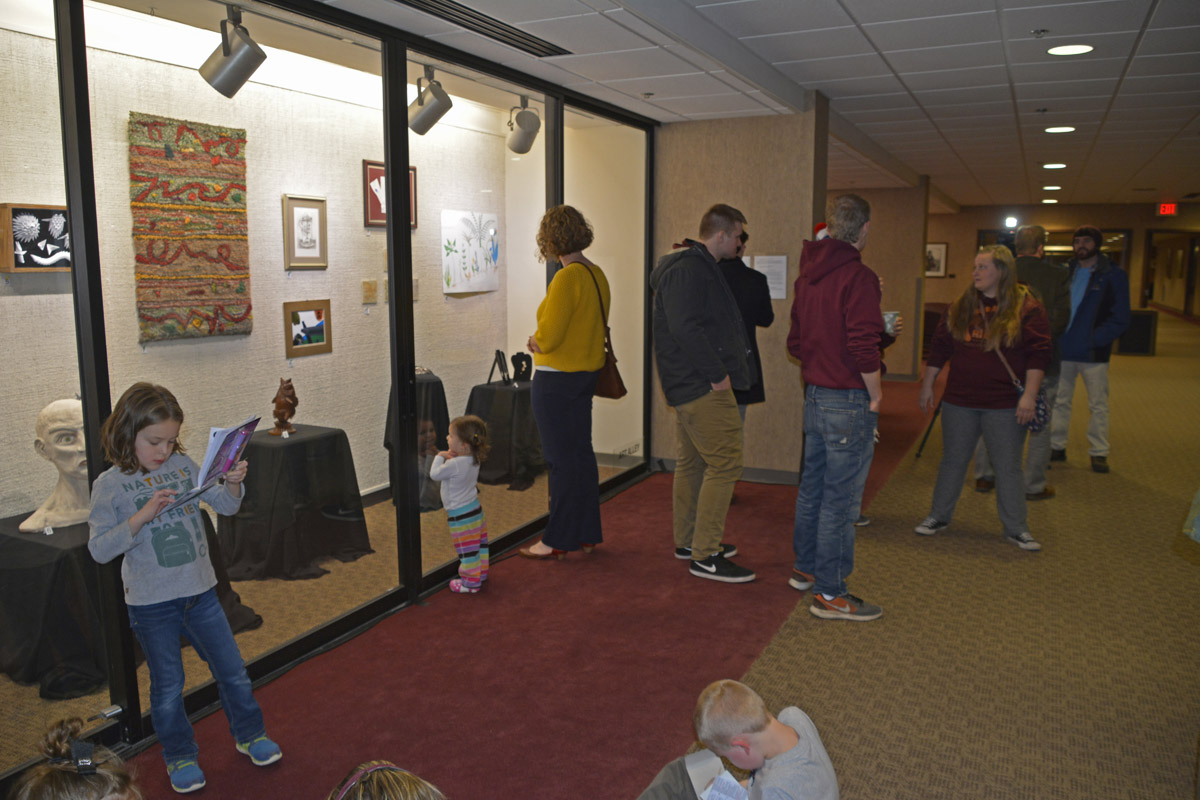| 1 |
Artist: Henry Conrad Neubig (Retired
professional artist. Piece not in competition)
Title: White Pelicans
Description: "Mud on water color paper."
|
 |
| 2 |
Artist: Nick Seaton
(Student in Plant Biology)
Title: Box Elder Lava Lamp, Osage Orange Bowl, and Box
Elder Bowl
Description: "The variation that makes these bowls unique from
each other has been acquired from minor adaptations over
time. From these adaptations, we find beautiful colors and
patterns that have been put on display and are unique to each
individual."
|
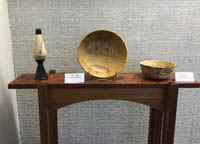 |
| 3 |
Artist: Henry George Neubig (Age 6, youth
competition)
Title: Pelican
Description: "I just painted it. Cause I just wanted to." |
 |
| 4 |
Artist: Henry George Neubig (Age 6, youth
competition)
Title: MOTU
Description: "I painted it at school. I think it looks like
a dragon |
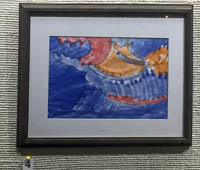 |
| 5 |
Artist: Kate Forer (Student in Art and Design)
First Place Award.
Title: Chartam Artis
Description: "This piece is intended to demonstrate how small base
structures can repeat and combine in different ways to create
beautiful new structures that are both unique and inherently
related, similar to the ways that basic biochemical or biological
units (molecules, cells, tissues) can combine to produce diverse
forms. Additionally, there are narratives of evolution hidden in
the "organisms" presented in this piece. One of the preserved
creatures is a single paper module, the base unit of all the paper
sculptures present in this piece. This creature is meant to
represent the single-cellular original organism from which the
other preserved creatures evolved. I attempted to create multiple
"chains of descent" that can be seen in the various paper modules;
in one case, a row of units connects in a line to form a segmented
"worm", while in another line of descent the units connect in a
brick-like manner to create a flat dorsal surface. This variety of
different structures showcase the trial-and-error process that is
prevalent in both art and natural selection as described by
Charles Darwin." |
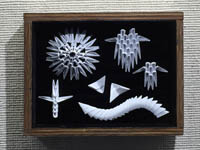 |
| 6 |
Artist: Philip Ragan (Student in Ceramics). Second
Place Award
Title: Techno-Flu
Description: "This piece illustrates the evolving trend of
integrating technology into our daily life, and even into our
physical bodies. If, at some point, our biology becomes so
entwined with technology, we would be just as susceptible to viral
hacking as we would be to the common flu bug." |
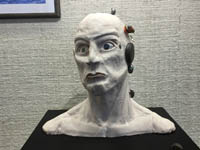 |
| 7 |
Artist: Linda Neubig
(Retired professional artist. Piece not in competition)
Title: Strata
Description: "Hand made wool rug." |
 |
| 8 |
Artist: Dan Nickrent (Professor Emeritus in
Plant Biology. Piece not in competition)
Title: Jump for Joy
Description: "I carved this piece for my father who was an avid
fisherman. This is a largemouth bass (Micropterus salmoides),
the state freshwater fish of Florida where my dad spent his
winters. Without a hook in his mouth, the bass is jumping for joy
- or with a hook, my father." |
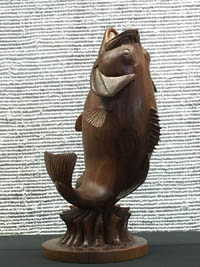 |
| 9 |
Artist: Angela Iseli (Student in Plant
Biology)
Title: Ocean View
Description: "Intaglio print. 'Ocean view' represents the clashing
between the man made with nature, resulting in an unpredictable
outcome. Tension is meant to be felt from the restricted movement
allowed to the sea life within the glass cup. The confined space
leads to the acceleration of mutations within populations under
this stress. Organisms are forced to either adapt or cease to be." |
 |
| 10 |
Artist: Agustín Jiménez (Associate Professor
in Zoology. Piece not in competition)
Title: Struggle for Existence
Description: "Werner Herzog: 'People see nature and think they are
in harmony. I see struggle, death and fornication.'
Parasites are a selective force that may determine the survival
and evolution of their hosts. Finding a host and infecting
them is a major struggle for the parasites. In the picture,
the giant anteater may be infected by Aspidoderid nematodes
(SEM)." |
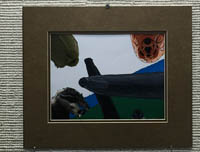 |
| 11 |
Artist: Araceli Jiménez (Age 4)
Title: Flowerpool
Description: "Flowers and butterflies live together… the tree
house… I love that |
 |
| 12 |
Artist: Jessica Fulgoni (Student in Zoology)
Title: Divergence of Organisms
Description: "Over time one becomes three. Media: Porcelain with
underglaze and clear glaze." |
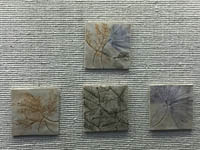 |
| 13 |
Artist: Eunsil Leem (Student in Art and
Design)
Title: Fish to Spoon
Description: "The design of this spoon was inspired by the form of
fish vertebra. While the body is made of copper, the tips of
the spikes were made of sterling silver. As a person who is
interested in anatomy, the vertebra is the most intrigueing part
as the mechanism of movement. I wanted to express the movement by
the repetition and subtle transformation of small units." |
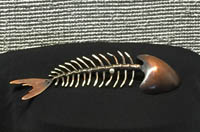 |
| 14 |
Artist: Marisa Szubryt (Student in Plant
Biology)
Title: Descent with Modifications
Description: NA |
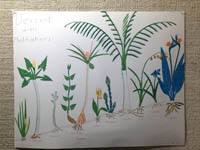 |
| 15 |
Artist: Rhonda Rothrock
(Staff in Cinema and Photography). Third
Place Award.
Title: Cuttled?
Description: "Cuttlefish
pendant form cast in sterling silver from a design I carved into
cuttlebone, some forging required. Toggle clasp cast in sterling
silver also from a design I carved into cuttlebone then forged to
current form. Chain purchased.
Cuttlefish, family Sepiidae, are fascinating creatures with near
magical abilities including the ability to change both their
visible skin pattern and color. They range in size from 15
millimeters to 50 centimeters and are considers one of the most
intelligent of the invertebrates.
Cuttlebone (cuttlefish bone) is a hard brittle internal structure
(internal shell) made of layered calcium carbonate & found in
all members of cuttlefish. Cuttlebone as sold as a source of
calcium in agriculture and other industries. Cuttlebone can
withstand high temperatures and is easily carved, making it well
suited for small metal casting; an ancient art process going back
5000 years.
I am in awe of cuttlefish and have a great admiration for them.
Some cuttlefish are classified as endangered species. While
enthusiastically drawn to this form of casting and its
unpredictability, I struggle with the ethics of cuttlebone
procurement. Cuttlebone does not rot when the fish dies so
cuttlebones are found washed ashore and collected but is that
enough for the market?" |
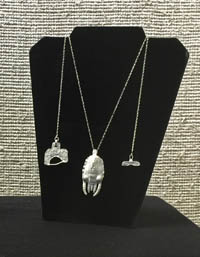 |
| 16 |
Artist: Rhonda Rothrock (Staff in Cinema and
Photography)
Title: Shelf Mushroom / Bracket FungusBrooch?
Description: "Found object(s) investment casts; shelf mushroom /
bracket fungus cast in sterling silver and twigs cast in bronze;
soldered together into a brooch. Worn with bronze topped hat pin." |
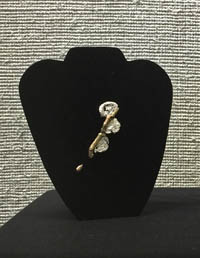 |
